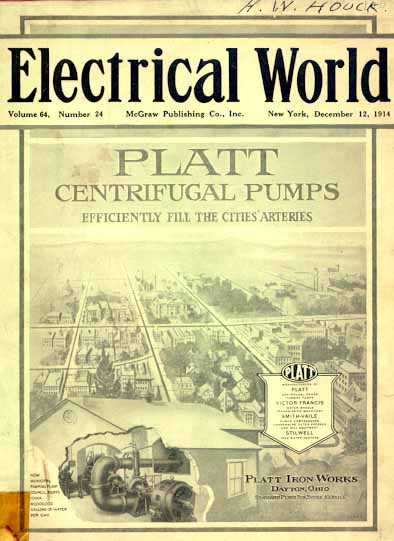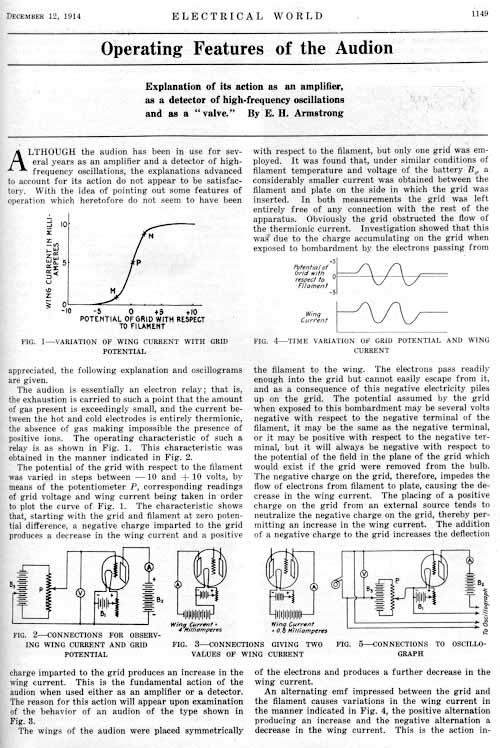
November 25, 1906, marks the beginning of modern electronics. On this date Lee de Forest would have a New York City automobile lamp maker, H. W. McCandless, produce a lamp to his specifications. This lamp would be the Fleming valve he had read about earlier in the Proceedings of the Royal Society - but for an important difference, a wire, later called the "grid", was placed between the filament and plate. The triode, dubbed the "Audion" by de Forest, was born.
By the middle of 1913 De Forest had sold his
Audion patents (except for use in wireless) to AT&T for
$50,000.00. In 1914 AT&T paid de Forest $90,000.00 for its
use in wireless, and in 1917 paid de Forest $250,000.00 for all
remaining rights.
One of Armstrong's de Forest Audions, ca. 1912, carefully preserved by Harry Houck.

While de Forest knew at the time he had made a significant invention (and what would later prove to be his "greatest invention", and only truly successful invention), he could not explain the electrical action within the Audion. Unfortunately, de Forest had decided early on, based on his prior work with various gaseous detectors, that a residual gas within the Audion was essential to its operation.
During his work on the regenerative circuit, Armstrong had undertaken a complete study of the de Forest Audion and its operating characteristics. In his first major article, published in Electrical World, December 12, 1914, Armstrong was the first to satisfactorily explain the action of the Audion - and to point out the necessity for a more complete vacuum.
Electrical World for December 12, 1914

